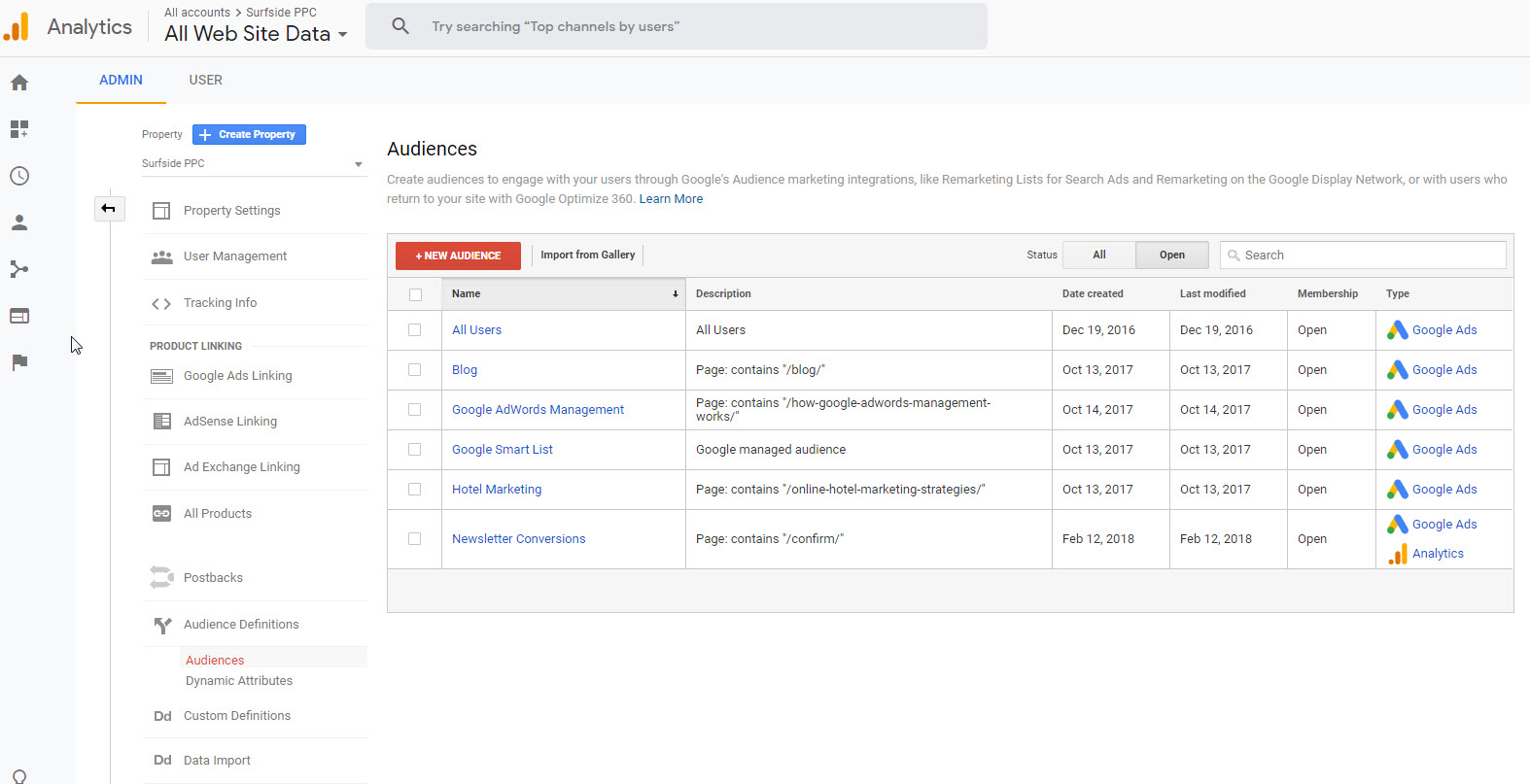Advanced Techniques for Remarketing In Google Analytics
Wiki Article
Utilizing Remarketing in Google Analytics: A Comprehensive Overview
Taking advantage of remarketing in Google Analytics provides organizations a tactical edge in getting to out to prospective clients. This overview will certainly shed light on the essential steps entailed in taking advantage of the full potential of remarketing in Google Analytics, leading to boosted marketing end results.Recognizing Remarketing in Google Analytics
Remarketing in Google Analytics allows businesses to purposefully target users that have formerly engaged with their internet site or mobile app. By leveraging information from Google Analytics, services can produce tailored remarketing checklists based on customer habits, such as pages checked out, activities taken, or details objectives accomplished. This effective device enables organizations to re-engage with individuals who have actually revealed interest in their solutions or products, eventually boosting the chance of conversion.Understanding the different kinds of remarketing strategies is crucial for an effective campaign - What Is “Remarketing” In Google Analytics?. Google Analytics offers numerous options, consisting of standard remarketing, vibrant remarketing, and remarketing lists for search ads (RLSA) Each type offers a special objective and can be tailored to fulfill specific advertising goals
In addition, analyzing the efficiency of remarketing campaigns is crucial for enhancing outcomes. Google Analytics offers useful insights into the performance of different remarketing strategies, enabling organizations to make data-driven choices and fine-tune their targeting method. By continually keeping track of and readjusting remarketing initiatives based upon analytics data, services can maximize ROI and drive success in their advertising initiatives.
Setting Up Remarketing Projects

After setting up target market listings, the next step is to connect Google Analytics with Google Advertisements. By connecting these two platforms, businesses can effortlessly move audience listings from Google Analytics to Google Ads for remarketing functions. This combination allows for more exact targeting and far better campaign efficiency.
When the accounts are linked, companies can create remarketing campaigns in Google Advertisements making use of the audience lists formerly defined in Google Analytics. These campaigns can be tailored with details ad creatives, messaging, and bidding methods to efficiently re-engage with previous site visitors and drive conversions. By following these actions, organizations can leverage the power of remarketing to improve their marketing initiatives and increase ROI.
Utilizing Audience Segmentation Techniques

Predefined sectors in Google Analytics allow you to quickly assess typical target market categories fresh individuals, returning users, or users who completed a particular goal on your site. Customized sections, on the various other hand, allow you to develop distinct segments based upon specific criteria that are very important to your service purposes. Dynamic remarketing lists automatically adjust based upon individual actions, revealing individualized advertisements to individuals who have communicated with your site specifically methods.
Analyzing Remarketing Efficiency Metrics
Upon evaluating the performance of remarketing campaigns in Google Analytics, the evaluation of vital performance metrics gives useful insights into target market engagement and conversion rates. By delving right into metrics such as click-through rates (CTR), conversion prices, price per purchase (CPA), and return on advertisement spend (ROAS), online marketers can determine the success of their remarketing efforts. CTR shows the percent of customers that clicked on the ad after viewing it, reflecting the ad's importance and appeal. Conversion rates measure the percent of users that finished a desired action, such as purchasing, after clicking on the advertisement. CPA exposes the typical price sustained for each conversion, aiding examine project success. ROAS, on the other hand, measures the profits generated for every dollar invested in marketing. Evaluating these metrics makes it possible for online marketers to optimize projects, refine target market targeting, and allocate budgets efficiently to boost overall remarketing efficiency.Optimizing Remarketing Methods
When refining remarketing strategies in Google Analytics, here are the findings concentrating on target market division is vital for attaining campaign success. By splitting your target market right into certain segments based upon their habits, demographics, or rate of interests, you can customize your ads extra effectively to each team. This targeted approach boosts the likelihood of check my site involving customers who have actually currently shown interest in your service or products, leading to higher conversion prices.An additional critical facet of optimizing remarketing strategies is continually screening and refining your campaigns (What Is “Remarketing” In Google Analytics?). A/B testing various ad creatives, messaging, or offers can assist you recognize what reverberates ideal with your audience and drives one of the most conversions. By analyzing the performance of these examinations in Google Analytics, you can make data-driven decisions to enhance your remarketing efforts further
Furthermore, leveraging vibrant remarketing can dramatically enhance your project results. This attribute permits you to reveal individualized ads to individuals based upon their previous interactions with your web site, showcasing services or products they have actually formerly seen. By providing customized material to users based upon their passions and behaviors, dynamic remarketing can help increase interaction and drive conversions.
Verdict
To conclude, using remarketing in Google Analytics is a critical strategy to target users that have actually previously engaged with a site. By producing tailored audience checklists and making use of audience segmentation methods, this content companies can optimize remarketing advocate raised conversion prices. Evaluating efficiency metrics and continually optimizing approaches are important for optimizing the efficiency of remarketing efforts.Google Analytics provides numerous choices, consisting of standard remarketing, dynamic remarketing, and remarketing checklists for search advertisements (RLSA)After setting up audience checklists, the following step is to connect Google Analytics with Google Advertisements. By connecting these 2 platforms, businesses can seamlessly move audience lists from Google Analytics to Google Advertisements for remarketing purposes.When the accounts are linked, services can develop remarketing campaigns in Google Ads using the audience provides previously specified in Google Analytics.When refining remarketing methods in Google Analytics, focusing on target market division is extremely important for attaining project success.
Report this wiki page